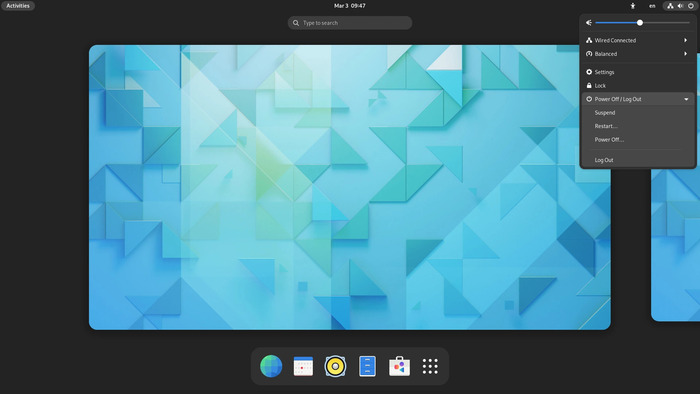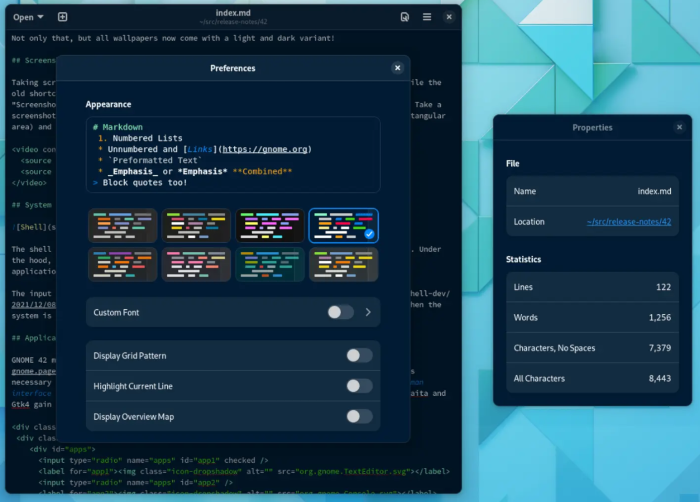After six months of development is presented the release of the desktop environment gnome 42 . To quickly evaluate the possibilities of GNOME 42, specialized Live builds are proposed based on OpenSUSE And installation image , prepared as part of the GNOME OS initiative. GNOME 42 is also incorporated into the experimental assembly of assemblies Fedora 36.
in new release :
- The global interface design settings are implemented, informing applications about the need to turn on the dark theme instead of light. The dark mode is turned on in the “Appearance” panel and is supported in most GNOME applications, as well as in all standard wallpaper wallpapers. For applications, it is possible to define your own style settings that can be used, for example, for inclusion in individual applications of light or dark design, regardless of the total system style.
/ Center> - Recycled interface for creating screenshots in which integration with a tool for creating screenstry and is given the ability to create a snapshot of a specific part of the crane or a separate window. After pressing the Print Screen key, a dialog is displayed, allowing you to select the screen area and save one snapshot or video recording mode. You can also use hot keys to control.
- Many applications are transferred to the use of GTK 4 and Libadwaita library, which offers ready-made widgets and objects to build applications that meet Gnome Hig Recommendations and capable adaptively adapt to the screens of any size. In particular, Libadwaita is now used in applications such as Disk Usage Analyzer, To Do, Fonts, Tour, Calendar, Clocks, Software, Characters, Contacts, Weather, Calculator, Sound Recorder, App Icon Preview, Icon Library and Secrets. Many of these applications can now be installed apart in Flatpak format.
- updated the system style of the user interface and the GNOME Shell shell is visually unified with the new implementation of applications translated into using Libadwaita. Recycled the style of symbolic pictograms.

- Updated the GNOME Settings configurator interface, which is also based on Libadwaita. Redone the design of the panels to configure appearance, applications, screen, languages and users.

/Media reports.

